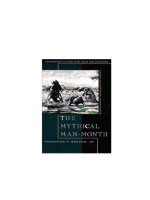Addison wesley the XML schema complete reference sep 2002 ISBN 0672323745
Bạn đang xem bản rút gọn của tài liệu. Xem và tải ngay bản đầy đủ của tài liệu tại đây (7.65 MB, 1,331 trang )
XMLSchemaCompleteReference,The
ByCliffBinstock,DavePeterson,MitchellSmith,
MikeWooding,ChrisDix,ChrisGaltenberg
Publisher :AddisonWesley
PubDate :September27,2002
ISBN :0-672-32374-5
Pages :1008
WiththesuccessfulimplementationofXMLSchema,developersarelearninghowto
increaseproductivity,improvesoftwarereliability,minimizedevelopmenttime,and
decreasetimetomarket.Thisin-depthreferenceisanall-in-oneresourcedesignedto
helpdevelopersleveragethepowerandpotentialofXMLschemasbyofferinga
completeroadmaptotheircreation,design,anduse.
Thisauthoritativereferenceandtutorialisfilledwithpracticalinsightsand
detailedexamples.Thebookbeginsbyprovidingaconceptualintroductionto
XMLSchema.Fromthere,coverageshiftstotheW3CSchema
Recommendationandhowtoapplyschemastospecificbusinessgoals.The
authorsprovideinsightandinstructionthroughoutonintegratingXMLschemas
intoexistingtechnologiessuchas.NET,Java,VisualBasic,Oracle,andmore.
Thebookconcludeswithacompletecasestudydesignedtoreinforceand
illustratematerialcovered.
Additionaltopicsinclude:
Tableof
•
Contents
Applicationsforschemas
Simpleandcomplextypes
XMLschemaprocessingandvalidation
NamespacesinXML
UsingschemaswithDOMandSAX
XMLschemadocumentsyntax
XMLInformationSets
XMLSchemaapplicationsofXPath
Whetherdesigningaschemafromscratchorintegratingschemasinto
contemporarytechnologies,TheXMLSchemaCompleteReferenceisthemost
completeanddefinitivesourcebookavailablefortheXMLSchema
environment.
777
Copyright
Preface
TheHistory
TheBook
TheWebSite
TheValue
Acknowledgments
AbouttheAuthors
PartI:XMLSchemaOverview
Chapter1.Introduction
Section1.1.WhyXML?
Section1.2.WhyXMLSchemas?
Section1.3.TheWorldWideWebConsortium(W3C)Recommendations
Section1.4.Object-orientedConcepts
Section1.5.UnifyingTerminology
Section1.6.ThematicExamples
Section1.7.CreatinganXMLSchemaDocument
Section1.8.TypesettingConventions
Section1.9.OnlineResources
Chapter2.XMLProcessing
Section2.1.Basics
Section2.2.XMLStructureBeforeandAfterParsing
Section2.3.SchemaProcessing
Chapter3.XMLNamespaces
Section3.1.UniformResourceNamesandUniformResourceLocators
Section3.2.NamespaceComponents
Section3.3.DeclaringNamespaces
Section3.4.QualifiedNamesandQNames
Section3.5.NamespaceScoping
Section3.6.XMLSchemaandNamespaces
Chapter4.XPathandXPointer
Section4.1.XPath
Section4.2.XPointer
Chapter5.TheStructureofDocumentsandSchemas
Section5.1.XMLDocuments
Section5.2.TheXMLInformationSet
Section5.3.IntroductiontothePSVI
Section5.4.IntroductiontoSchemas
Section5.5.SchemaDocuments
PartII:CreatingXMLSchemaDocuments
Chapter6.OverviewofanXMLSchemaDocument
Section6.1.TheEnclosingschemaElement
Section6.2.Namespaces
Section6.3.Scope
Section6.4.AnnotatingElements
Section6.5.ConstrainingElements
Section6.6.ConstrainingAttributes
Section6.7.SimpleTypes
Section6.8.ComplexTypes
Section6.9.ModelGroups
Section6.10.SubstitutionGroups
Section6.11.Instantiability
Section6.12.IdentityConstraintDefinitions
Section6.13.Notations
Section6.14.ImportsandIncludes
Section6.15.LocatingXMLSchemasandXMLSchemaComponents
Section6.16.SchemaElementIDs
Chapter7.CreatinganXMLSchemaDocument
Section7.1.ASimpleXMLSchemaDocumentExample
Section7.2.AschemaElementwithEveryAttribute
Section7.3.ConceptsandObservations
Section7.4.TheschemaElement
Section7.5.TheannotationElement
Section7.6.TheappinfoElement
Section7.7.ThedocumentationElement
Section7.8.TheincludeElement
Section7.9.TheimportElement
Section7.10.ThenotationElement
Section7.11.TheredefineElement
Chapter8.ElementTypes
Section8.1.AnExampleofaTrivialElementType
Section8.2.ConceptsandObservations
Section8.3.TheelementElement
Section8.4.TheanyElement
Chapter9.AttributeTypes
Section9.1.AnExampleofanAttributeType
Section9.2.AnExampleofaNamedAttribute-useGroup
Section9.3.AnExampleofanyAttribute
Section9.4.ConceptsandObservationsRegardingAttributeTypes
Section9.5.TheattributeElement
Section9.6.TheattributeGroupElement
Section9.7.TheanyAttributeElement
Section10.1.AnExampleofaSimpleTypeDerivedfromtheBuilt-in
tokenDatatype
Chapter10.SimpleTypes
Section10.2.AnExampleofaPattern-constrainedSimpleType
Section10.3.AnExampleofaSimpleTypeDerivedfromaUser-derived
SimpleType
Section10.4.ConceptsandObservations
Section10.5.ThesimpleTypeElement
Section10.6.TherestrictionElement
Section10.7.ThelistElement
Section10.8.TheunionElement
Chapter11.ComplexTypes
Section11.1.AnExampleofaComplexTypeSpecifyingEmptyContent
Section11.2.AnExampleofaComplexTypeThatAddsAttributestoa
SimpleType
Section11.3.AnExampleofaComplexTypeSpecifyingNestedElement
Types
Section11.4.AnExampleofaComplexTypeSpecifyingMixedContent
Section11.5.ConceptsandObservations
Section11.6.ThecomplexTypeElement
Section11.7.ThesimpleContentElement
Section11.8.ThecomplexContentElement
Section11.9.TheextensionElement
Section11.10.TherestrictionElement
Section11.11.TheallElement
Section11.12.ThechoiceElement
Section11.13.ThesequenceElement
Section11.14.ThegroupElement
Chapter12.Built-inDatatypes
Section12.1.NumericDatatypes
Section12.2.Date,Time,andDurationDatatypes
Section12.3.StringDatatypes
Section12.4.OddballDatatypes
Chapter13.IdentityConstraints
Section13.1.IdentityConstraintExample
Section13.2.ConceptsandObservations
Section13.3.TheuniqueElement
Section13.4.ThekeyElement
Section13.5.ThekeyrefElement
Section13.6.TheselectorElement
Section13.7.ThefieldElement
Chapter14.RegularExpressions
Section14.1.ConceptsandObservations
Section14.2.RegularExpressionSyntax
Section14.3.ConstrainingSimpleContent
PartIII:Validation
Chapter15.XMLSchemaComponentDetail
Section15.1.Schemas:TheBasicIdea
Section15.2.Schema(SchemaSchemaComponent)
Section15.3.AttributeTypes
Section15.4.ElementTypes
Section15.5.Annotation(AnnotationSchemaComponent)
Section15.6.Notation(NotationDeclarationSchemaComponent)
Chapter16.PSVIDetail
Section16.1.SchemaValidationandSchemaProcessing
Section16.2.ThePSVI
Chapter17.JavaandtheApacheXMLProject
Section17.1.ApacheBackground
Section17.2.JavaXercesonYourComputer
Section17.3."HelloApache"
Section17.4.CriticalXercesPackages
Section17.5.XercesJavaDOMIn-depth
Section17.6.JavaXercesSAXIn-depth
Chapter18.MSXMLandtheSchemaObjectModel(SOM)
Section18.1.IntroducingMSXML
Section18.2.ConceptsandObservations
Section18.3.XMLSchemaExamples
Section18.4.MSXMLFundamentals
Section18.5.SchemaObjectModel(SOM)
Section18.6.Validation
Section18.7.Example:XMLSchemaTree
PartIV:Result-orientedSchemas
Chapter19.Object-orientedSchemas
Section19.1.ConceptsandObservations
Section19.2.Object-orientedConcepts
Section19.3.XMLSchemasandObjects
Section19.4.MappingXMLSchemastoObject-orientedLanguages
Section19.5.SampleSchema:party.xsd
Section19.6.DesignPatterns
Section19.7.LanguageExamples
Chapter20.Document-orientedSchemas
Section20.1.WhyUseXMLforDocuments?
Section20.2.CreatingaSchemaforaSetofDocuments:DocumentAnalysis
Section20.3.ImplementingDocumentProcessing
Chapter21.Application-orientedSchemas
Section21.1.XMLApplications
Section21.2.RoleofXMLSchemas
Section21.3.DescribingApplications
Section21.4.ApplicationStructure
Section21.5.TransportingXML
Section21.6.DescribingApplications
Section21.7.ExampleApplication
PartV:Data-orientedSchemas
Chapter22.Data-orientedSchemas:Datatypes
Section22.1.XMLSchemaDesignConsiderations
Section22.2.GeneralDiscussionofFacetRestrictions
Section22.3.CheckConstraintsversusTriggers
Section22.4.Datatypes
Chapter23.Data-orientedSchemas:SimpleTypes
Section23.1.XMLSchemaDesignConsiderations
Section23.2.AnExampleofaSimpleTypeMappingtoaDatabaseSchema
Section23.3.ConceptsandObservations
Section23.4.ThelistElement
Section23.5.TheunionElement
Chapter24.Data-orientedSchemas:ComplexTypes
Section24.1.XMLSchemaDesignConsiderations
Section24.2.AnExampleofaComplexTypeMappingtoaDatabaseSchema
Section24.3.AnExampleofaComplexTypeMappingSupportingMixed
ContenttoaDatabaseSchema
Section24.4.ConceptsandObservations
Section24.5.complexTypeElement
Section24.6.allElement
Section24.7.annotationElement
Section24.8.anyElement
Section24.9.anyAttributeElement
Section24.10.attributeGroupElement
Section24.11.choiceElement
Section24.12.complexContentElement
Section24.13.groupElement
Section24.14.sequenceElement
Section24.15.simpleContentElement
Section24.16.restrictionElement
Section24.17.extensionElement
PartVI:ACaseStudy:TheCampusResourceandSchedulingSystem(CRSS)
Chapter25.TheBusinessCase
Section25.1.BasicCRSSFlow
Section25.2.CRSSRequirements
Section25.3.SystemUsers
Section25.4.ExtensibleStyleLanguageTransform(XSLT)
Section25.5.SQL2000XMLCapabilities
Section25.6.CRSSTechnicalArchitecture
Section25.7.Summary
Chapter26.TheArchitecture
Section26.1.SystemArchitecture
Section26.2.CreatingHTMLPagesbyUsingXSLT
Section26.3.SendingFormData
Section26.4.Summary
Chapter27.TheServerTier
Section27.1.DatabaseDesignwithXMLSchemas
Section27.2.SQLIISConfiguration
Section27.3.CRSSApplicationRequirements
Section27.4.Updategrams
Section27.5.Summary
Chapter28.TheIntegratedSolution
Section28.1.CRSSDesignReview
Section28.2.WebTierConstruction
Section28.3.UIBrokerComponentConstruction
Section28.4.SecurityBrokerComponentConstruction
Section28.5.CRSSBrokerComponentConstruction
Section28.6.TemplateQuery
Section28.7.CRSSReview
PartVII:Appendixes
AppendixA.XMLSchemaQuickReference
AppendixB.XMLSchemaRegularExpressionGrammar
AppendixC.TheThematicCatalogXMLSchema
AppendixD.Data-orientedSchemas:Oracle8iDatatypes
SectionD.1.GeneralOverview
SectionD.2.DiscussionoftheConsequences
AppendixE.Glossary
SectionE.1.Objects,Classes,andInstances
SectionE.2.Markup
SectionE.3.XMLDocuments
SectionE.4.XMLDTDsandSchemas
SectionE.5.SelectedDatatypesUsedinSchemaDocuments
SectionE.6.Miscellaneous
Copyright
Manyofthedesignationsusedbymanufacturersandsellerstodistinguishtheir
productsareclaimedastrademarks.Wherethosedesignationsappearinthis
book,andAddison-Wesleywasawareofatrademarkclaim,thedesignations
havebeenprintedwithinitialcapitallettersorinallcapitals.
Theauthorsandpublisherhavetakencareinthepreparationofthisbook,but
makenoexpressedorimpliedwarrantyofanykindandassumenoresponsibility
forerrorsoromissions.Noliabilityisassumedforincidentalorconsequential
damagesinconnectionwithorarisingoutoftheuseoftheinformationor
programscontainedherein.
Thepublisheroffersdiscountsonthisbookwhenorderedinquantityforbulk
purchasesandspecialsales.Formoreinformation,pleasecontact:
U.S.CorporateandGovernmentSales
(800)382-3419
ForsalesoutsideoftheU.S.,pleasecontact:
InternationalSales
(317)581-3793
VisitAddison-WesleyontheWeb:www.awprofessional.com
LibraryofCongressCataloging-in-PublicationData
TheXMLschemacompletereference/CliffBinstock...[etal.]
p.cm
Includesindex
1.XML(Documentmarkuplanguage)2.Databasemanagement.
I.Binstock,Cliff.
QA76.76.H94X45492003
005.7'2—dc212002074383
Copyright©2003byPearsonEducation,Inc.
Allrightsreserved.Nopartofthispublicationmaybereproduced,storedina
retrievalsystem,ortransmitted,inanyform,orbyanymeans,electronic,
mechanical,photocopying,recording,orotherwise,withoutthepriorconsentof
thepublisher.PrintedintheUnitedStatesofAmerica.Publishedsimultaneously
inCanada.
Forinformationonobtainingpermissionforuseofmaterialfromthiswork,
pleasesubmitawrittenrequestto:
PearsonEducation,Inc.
RightsandContractsDepartment
75ArlingtonStreet,Suite300
Boston,MA02116
Fax:(617)848-7047
Textprintedonrecycledpaper
12345678910—CRS—0605040302
Firstprinting,September2002
Dedication
CliffBinstock
ToAmyLynn,mytruelove,mybestfriend,mylifepartner,mywife
DavePeterson
To"Helga"
MitchellSmith
ToRickforinspiringmeinsomanyways,DanforbringingmetoArrayand
yourheartfulness,Jonathanforfinallyhiringme(andsomuchmore),Shanti,
Eliyahu,andAmyforbeingwhoyouare,andtoYehudisforteachingmesowell.
Finally,tomywifeBarbarawhoneverceasestoamazeme.Thanksforyour
patience,thetimetowritethisbook,andyourunderstanding.
MikeWooding
IwouldliketothankmybeautifulwifeLindaforallofhersupportonthisand
everyproject.Withouthersupport,Icouldnotdisappearforthemanylong
hoursthatarerequiredtowrite.
ChrisDix
ToMicah
ChristopherGaltenberg
ToLavinia,mylifeblood
Preface
Theauthoringandeditorialteamsforthisbookhaveworkedhardtobringyou
thecleanest,clearest,andmostcompleteXMLschemareferencesourceonthe
market.Endlesssweat,researchhours,codetesting,techanddefinitionreviews
andcounterexplanations,e-mailqueries,dialogue,anddebatespassedbefore
thisbookcametofruition.Earnestefforts,stress-filledmoments,andwriting
deadlineshavefinallygottenustopresstime.Hereiswhatthisbookmeansto
us.
TheHistory
Therearealwaysnewandhottechnologiestowriteabout(C++,Java,SQL,
.NET,XMLSchema,andmuchmore).Therearequalifiedwriterseagertowrite
aclearandconcisebest-sellerforyourbookshelf.Therearemillionsofsoftware
developerseagertolearn.Therearemorethanafewpublisherstochoosefrom.
Ultimatelythereareseveraltechnicalbooksonthemarketwithinmonthsofany
newproduct,platform,service,tool,orlanguage'sreleasethatseektodescribe,
explain,clarify,andelaborateonagiventechnology'simportance,utility,and
implementation.However,thereareveryfewreallygoodbooksonthe"whyand
when"thatwillactuallyteachdevelopersemergingtechnologies.Infact,the
hardesttypesofbookstowritediscussemergingtechnologies,becausethere
reallyarenotmanygoodexamples.Furthermore,eventhe"experts"frequently
disagreeonwhatis"right."
Wespentmanymonths—fulltime—writingthisbook.Wecollectivelyhave
somethinglike80yearsofexperience.SomeofusareontheW3CSchema
WorkingGroup.Webelievethatthiscombinedexperience,aswellasthe
determinationwritingthisbook,resultsinoneofthefew"reallygoodbooks"
previouslymentioned.Ittakestherightcombinationoftechnology,authors,
publishers,andreaderstopulloffabook.
TheBook
Thereareseveral,andprobablysoontobelots,ofbooksonthemarketthat
pertaintoXMLSchema.Despitethisinflux,westronglybelievethatthisbook
providesdetailsthatfew,ifany,otherbooksprovide.Specifically,the
overarchinggoaldrivingthisbookistoprovidedetailedexamplesofeveryXML
Schemacomponent.Inordertodetaileachcomponent,thisbookcontainsan
exampleofthecorrespondingSchemadocumentelement,andallofthe
associatedattributes.Manyofthebooksonthemarkettodayprovidesurface
detailsaboutSchemacomponents.However,thisbookprovidesdetailed
scenarios.NotonlyaretheremanypagesandexamplesofeachSchemaelement,
thereisatleastoneexampleofeverysingleattributeofeverysingleXML
schemadocumentelement.Havingaccomplishedthatcolossaltask,weadded
exampleafterexampleintegratingwithmanylanguagesandtechnologieson
manyplatforms.Afterall,whatgoodisanXMLschemabyitself?
Audience
TheprimarygoalofthisbookistoprovidedetailedinformationaboutXML
Schema.Thebookopenswithadiscussiononthebackgroundandsupporting
RecommendationsforXMLSchema.ThebookaddresseshowtocreateXML
schemadocuments.Additionally,someofthechaptersinthisbookcover
integratingXMLschemasintootherexistingtechnologiessuchasJava,Visual
Basic,andOracle.Theaudienceofthisbookissoftwaredeveloperswhoneedto
createanXMLschemaorperhapsintegrateoneintoanapplication.Thisbook
doesnotsufficientlycoveraspectsoftheSchemaRecommendationthatpertain
towritinganXMLschemavalidator.
Prerequisites
MostofthetextinthisbookrequiresfamiliaritywithXML.Fordiscussionsthat
applytovarioustechnologies,suchasOracle,thetextrequiresfamiliaritywith
thepertinenttechnology.Ontheotherhand,thebookexplainsthestandardsthat
provideafoundationforXMLSchemaandevenXML,suchastheXMLInfoset,
XMLNamespace,andXPath.Object-orientedprinciplesapplytoXMLSchema;
thebookrequiresthatyouhaveageneralunderstandingofobjectsand
inheritance.
OrganizationofThisBook
ThepurposeofthisbookistodetailhowtocreateanXMLschema.
Furthermore,varioussectionsofthisbookdiscusshowandwhyyouwoulduse
suchaschema.Thisbookisdividedintosevenparts:
PartI,XMLSchemaOverview
PartII,CreatingXMLSchemaDocuments
PartIII,Validation
PartIV,Result-orientedSchemas
PartV,Data-orientedSchemas
PartVI,ACaseStudy:TheCampusResourceandSchedulingSystem
(CRSS)
PartVII,Appendixes
PartIofthisbookopenswithabriefdiscussionofXMLandthebasisfor
needingXMLSchema.Theoverviewencompassesreasonstouse—ornottouse
—aschema.PartIalsocoverssomegeneralconceptsthatprovideafoundation
forthisbook.Inaddition,PartIbrieflydiscussesthepracticalaspectsofcreating
anXMLschemadocumentandvalidatinganXMLinstanceagainsttheschema
representedbythatschemadocument.AnXMLdocumentisacharacterstring
conformingtothegrammaroftheXMLRecommendation(seeSection1.3);it
mightbeintheformofaninputstream,abuffer,adiskfile,oranyotherform.
AnXMLinstanceisanXMLdocument—orpotentiallyevenpartofadocument
—whosevalidityisbeingdetermined.Specifically,thevalidityofthisdocument
dependsonexamininganXMLschemaspecifiedbytheXMLinstance,or
possiblyadifferentschemaselectedusinginformationnotinthedocument.
Note
ThetermXMLinstanceasusedinthisbookisnotgeneric:XMLisnotaclassof
whichthesecharacterstringsareinstances.AnXMLdocument(orafragmentof
one)iscalledan"XMLinstance"onlywhenitisintendedtocarrythe
connotationofacandidateforvalidationinthecontextwherethetermisused.
PartIIcoverstheW3CXMLSchemaRecommendation,XMLSchema,indetail.
Inparticular,PartIIdetailseveryXMLschemaelementtypeandallofthe
correspondingattributes.Examplesthroughoutthispartofthebookdemonstrate
nearlyeveryfeatureofXMLSchema.PartIIservesasatutorialorareference
manual.
PartIIIencompassesvalidationofXMLschemas.SomeofthechaptersinPart
IIIarebackgroundinformation,suchasanin-depthdiscussionofpostschemavalidationinfoset(PSVI).Otherchaptersaremoreconcrete,containingcode
examplesthatdemonstratehowtovalidateXMLagainstanXMLschema.
PartIVcovershowtoapplyanXMLschematoachieveaparticularbusiness
goal.Inparticular,thispartofthebookaddressesthetargetofanXMLinstance,
suchasadocumentoranapplication.Inotherwords,PartIVdiscusseshowto
createanXMLschemasuchthattheschemaandcorrespondingXMLinstances
arehelpfulinprovidingthedesiredsolution.
PartVdiscusseshowtomirroranXMLschemawithanSQLschema.The
chaptersinthispartofthebookuseOracleasthetargetdatabase.Manyofthe
issuescoveredaregenerictoSQLschemageneration.Oracle9iisthespecific
targetofPartV.NotethatAppendixDaddressesthedifferencesbetween
Oracle8iandOracle9ipertainingtoXMLschemas.
PartVIisacompletecasestudy.Thiscasestudy,theCampusResourceand
SchedulingSystem(CRSS),integratesXMLschemaswithMicrosoft
technology:SQL2000,the.NETFramework,VisualBasiccode,andmore.
PartVIIprovidesgrammars,codeexamples,andaglossaryforquickreviews.
TheWebSite
TheWebsitecorrespondsdirectlyto
thisbook.ThesolepurposeofthisWebsiteistoprovideanonlinereferencefor
developerswritingXMLschemas.Nominally,theWebsiteprovidesaplaceto
downloadallofthefilescreatedwhilewritingthisbook.Thesefilesincludenot
onlytheXMLschemasandthesourcecodeinvariouslanguages,butalsoallof
thetestcasesforeventheone-linecodesnippets:Allofthecodeinthisbookis
tested!
TheWebsiteismuchmoreextensivethanjustacollectionoffiles,however.In
additiontothetraditionallyavailabledownloads,
haslotssimpleonlineexamplesof
everyschemadocumentelement.Therearetablesforeachelementthatindicate
whatattributesarepossible,aswellasabriefdescription.AlthoughthisWebsite
isnotatutorial,itisafantasticquickreferenceforthosewhoalreadyunderstand
XMLSchemaingeneral,butmightforgetthespecificsyntax.Itisourhopethat
theWebsite,likethebook,becomesrealreferencematerialforlotsof
developers.
TheValue
OurgoalistomakeiteasytocreateanXMLschema—whetheryouneeda
tutorialtowriteyourfirstschemadocument,oryoujustneedareferencebookto
writeyour5,000th.Havingcreatedaschema,thisbookalsogivesyouthesame
levelsofassistancetoincorporateanXMLschemaintoyourapplication.This
bookprovidesasmuchsupportasyouneed,withoutevergettingintheway.
HavefunworkingwithXMLschemas—wedo!
WeinviteyounowtotakeatourthroughtheworldofXMLschema
components,beginningwiththeintroductionprovidedforyouinChapter1.We
welcomeyourstories,additions,codesamples,questions,feedback,and
insights.
CliffBinstock
MikeWooding
DavePeterson
ChrisDix
MitchellSmith
ChrisGaltenberg
Acknowledgments
CliffBinstock:Manythankstomywife,Amy,forputtingupwithmonthsof
workonthisbook:days,nights,andweekends.ManythankstocoauthorDave
Peterson.Dave'sunflagginge-mailsandediting,aswellashisparticipationin
theW3CXMLSchemaWorkingGroup,madethisbookasaccurateashumanly
possible.ThankstoShelleyKronzek,executiveeditor,forprovidingthe
opportunitytosharesomeofmyknowledgewithyou.ThankstoAnneMarie
Walker,thedevelopmenteditor,forteachingmehowtowriteabook(which,by
theway,isverydifferentfromallthetechnicaldocumentsIhavewrittenover
theyears).Mostly,thankstoyou,thereader,formakingthislongjourney
worthwhile.Ireallyhopethatthisbookmakesyourcurrentandfutureprojects
mucheasier.
DavePeterson:Iwanttothankmywife,Greta,forputtingupwithmelivingin
anotherworldfortoomanymonthswhilethisbookhasbeengestating.Cliff,it's
beenfun.AndthankstoTyrrellAlbaughforrepeatedlysavingoursanity
towardstheend.
MitchellSmith:IwouldliketothankmyfriendCliffforgettingmeinvolved,
ShelleyandAnneMarieforalloftheirworkonthisbook,andDaveBuehmann
andDavidSchraderforteachingmetheexpressivenessofSQLandthe
capabilitiesofOracle.
MikeWooding:MyeffortsonthisbookwerepossiblebecauseIhadthe
fantasticsupportofmywonderfulwifeLindaandmytwodaughters,Andreaand
Jessica.Thanksforallowingmetodisappearintomy"cave"tocompletethis.
ChrisDix:IwouldliketothankmywifeJenniferandmysonsAlexanderand
Calvin;youaremyfavorites.ThankstoCliff,Shelley,andthefolksatAddisonWesleyforthisopportunity.
ChrisGaltenberg:AllmylovetomyLadyLavinia...andmanythanksto
"TheYear2001,"themostbrutalandevolutionaryperiodofmylife.
AbouttheAuthors
CliffBinstockhasmorethantwentyyearsofsoftwaredevelopmentexperience.
Hiscurrentrolesrangefromhands-onarchitectureandcodedevelopmentto
mentoringandmanaginglargegroupsofdevelopers.Cliff'sobject-oriented
experiencebeganwithrelativelyunknownlanguagesinthe1980sand
culminatedinyearsofdevelopmentintheextremelypopularC++andJava
languages.CliffhasalsospentmanyyearsworkingwithmultipleSQL
databases.In2000and2001,Cliffhelpeddelivershrink-wrapsoftwarefora
biotechfirm.ThesoftwareusedmultipleXMLschemastoprovidethesoftware
contractsforvariousmodules.XML,alongwithappropriatesupportingXML
schemas,providedaprogrammaticpipeline.Thepipelinearchitecturenotonly
supplantedmanylinesofJava,butitturnedmany"codechanges"intotrivial
XMLedits.Theexpertiseacquiredduringthisdevelopmenteffortledtothe
writingofthisbook.CliffistheowneroftheconsultingfirmRobustSoftware.
DavePetersonisprincipalconsultantwithhisownfirm,SGMLWorks!,
providingSGMLandXMLsolutionsforpublishinganddatabasesystems
worldwide.DavehasbeenworkingwithSGMLsincebeforetheISOStandard
waspublishedin1986,andwithXMLsinceitwasjustagleaminafewpeople's
eyes.He'sbeenprogrammingandarchitectingsystemsprofessionallysince
1967.Hehelpeddesignthesystemthatproducesandprocessesthelargest
SGMLdocumentintheworld—morethanthreebillioncharacters,markup,and
textinonedocument(notcountinggraphics).Heranthedocumentanalysisthat
ultimatelydefinedthedocumentstructureusedbytheNewZealandParliament
forlegalpublications,andhasdonethesameforotherlegalandpharmaceutical
publishers,aswellasforpublishersofjournalsandmilitaryandcivilian
technicaldocuments.Dave'sfirstjobwithSGMLin1986involvedusingSGML
(XMLwasnotaroundyet)totransferdatafromonedatabasetoanother.Hehas
designedandprogrammednumerousSGMLandXMLprocessingsystems.Dave
servedontheISOcommitteethatoversawthecontinuingdevelopmentfrom
1990through1998.Sincethen,hehasservedontheW3CSchemaWorking
Group,whichproducedtheXMLSchemaRecommendationin2001andisnow
workingonthe1.1version.Hehasgivennumerouspresentationsandtutorialsat
SGMLandXMLconferences,andhaswrittenaboutfortyarticlesonvarious
SGMLandXMLtopics.HewasontheeditorialboardofthejournalMarkup
Languages:TheoryandPractice.
MitchellSmithisChiefSoftwareArchitectatArrayBioPharmaInc.,in
Boulder,Colorado.Hehasseventeenyearsofexperiencedevelopingsoftware
solutionsandhasbeenworkingwithrelationaldatabasesformorethantwelve
years.Heiscurrentlydevelopingrapidsoftwaresolutionstointegratechemists'
processes,integratinghardware/softwareproductswiththeexistingchemoinfomaticsinfrastructure,andassistingchemists(inasmallway)toproduce
breakthroughdrugcandidates.PriortojoiningArrayBioPharmaInc.,Mitch
workedforRationalSoftwareCorporation,whereheco-architectedanextgenerationrequirementsmanagementsystemusingJ2EEandXML
technologies.MitchholdsanA.B.fromHarvardCollegeandanM.S.in
computersciencefromtheUniversityofColorado,Boulder.Mitchisamember
oftheACMandseniormemberoftheIEEE.HevotesonIEEEsoftware
standardsandiscurrentlysecretaryoftheIEEEDenver/BoulderComputer
Societychapter.Mitchisaco-inventoronpatentnumber6,199,047,entitled
"Apparatusandmethodforaneventratingengine."Outsidework,Mitchisan
avidyear-roundmountainbiker;healsoenjoyscampingandoverseasvacations.
MikeWoodinghasbeeninthecomputerindustryfortwentyyears.Hehas
authoredseveralcoursesforLearningTreeInternational,includingEnterprise
ActiveServerPagesandMicrosoftTransactionServer.Hewasinvolvedwiththe
ActiveServerPages.comsiteandspeaksregularlyatindustryconferences.Asa
partneratKieferConsulting,Mikefocusesondeliveringadvancedarchitectures
usingInternetstandardsandleveragingMicrosoft's.NETFrameworkusing
manytools,includingCOM+,.NET,VisualStudio.NET,and.NETWeb
Services.PriortojoiningKieferConsulting,MikedevelopedproductswithIntel,
BaxterHealthcare,andseveralsmallerSiliconValleystart-upcompanies.Mike
holdstwopatentsforworkinroboticsandDNAprobeanalysis.Inhisspare
time,Mikeenjoyssnowskiing,windsurfing,basketball,andautomatinghis
housewithacombinationofcustomandoff-the-shelfhardware.
ChrisDixhasbeendevelopingsoftwareforfunsincehewastenyearsold,and
doingitforalivingforthepasteightyears.Chrisrecentlymadethetransition
fromC++andCOMtoC#and.NETandisfindinghelikesitbetterthanhe
expected.He'swrittenmagazinearticlesonSOAPandWindowsdevelopment,
andhehascontributedtotwobooksonXMLandWebServices.Chrisislead
developerforNavtrak,wherehedesignsanddevelopsproductsformobiledata
accessandassettracking.
ChrisGaltenbergisawriter,inventor,andmethodologist.Hisinterestsliein
therealmsofextendinghumanintelligencethroughphilosophyandsoftware.
Galtenbergpoetry,whichexploresthisphilosophy,canbefoundat
.
PartI:XMLSchemaOverview
PartIprovidesdetailonthefoundationoftheW3CXMLSchema
Recommendation.Thisfoundationincludes,amongothertopics,theW3C
recommendationsthatsupporttheW3CXMLSchemaRecommendation.
Chapter1providesanoverviewofthevariousW3Crecommendations
thatarethefoundationfortheXMLSchemaRecommendation.The
terminologyandconceptsfromthevariousrecommendationscoalesce
intoadiscretesetofterms,whichprovideahandlewithwhichtoread
theremainderofthisbook.
Chapter2providesahigh-leveloverviewofhowanXMLparser
validatesXML.Thisoverviewalsocoverstheparserextensions
requiredtovalidateXMLagainstanXMLschema.
Chapter3isanoverviewofnamespaces.Thisoverviewincludesa
discussionoftheW3CXMLNamespaceRecommendation.
NamespacesareoneofthefirstconsiderationswhencreatinganXML
schemadocument.
Chapter4coversabasicdescriptionoftherespectivegrammars.
XPathlocateselementsandattributesforIdentityConstraints.
XPointerlocateselementsforinclusioninanXMLschemadocument.
Chapter5coverstheabstractrepresentationofbothXMLdocuments
andXMLschemas.ThischapteralsointroducesXMLinfosets,which
aretheabstractversionsofdocumentsonwhichanXMLschema
processoroperates.
CONTENTS









